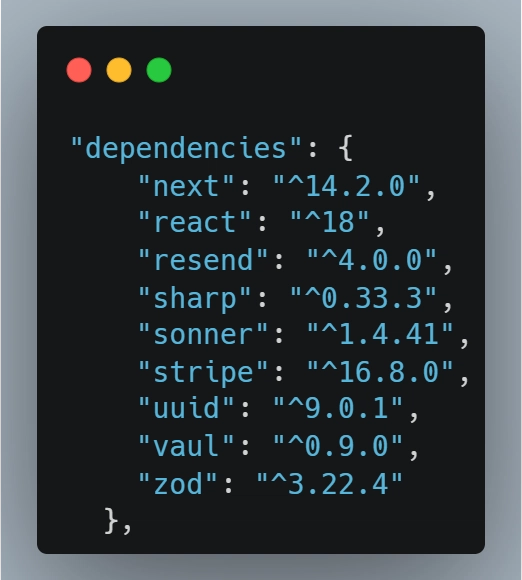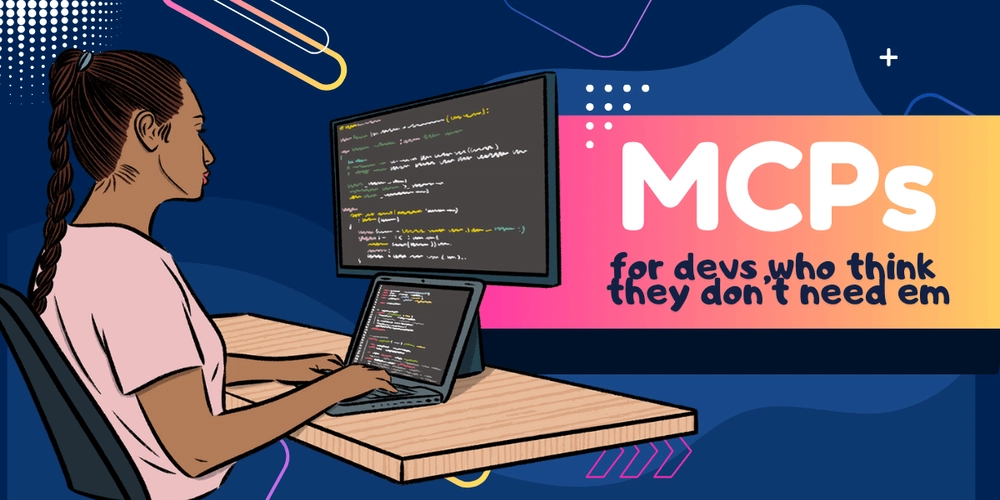If you’ve ever peeked into your package.json file when working with Next.js (or any JavaScript framework), you’ve probably noticed something like this,
At first glance, it’s just a version number with a little caret ^. Seems harmless, right? But that tiny symbol can determine whether your app runs smoothly in production or suddenly breaks after deployment.
This article takes a deep dive into the ^ symbol in package.json,
- What it actually means (SemVer).
- The difference between “
^14.2.0” and “14.2.0“. - Why deployments (like on AWS EC2) sometimes install different versions than your local environment.
- The pros and cons of using
^. - Best practices for keeping your Next.js projects stable.
By the end, you’ll know exactly when to embrace ^ and when to avoid it.
1. What is Semantic Versioning (SemVer)?
Most npm packages (including Next.js) follow semantic versioning written as,
Example 14.2.0
- MAJOR ➮ Breaking changes (
14.x.x➝15.x.x). - MINOR ➮ New features, backwards-compatible (
14.2.x➝14.3.x). - PATCH ➮ Bug fixes, backwards-compatible (
14.2.0➝14.2.1).
The idea is that you can safely upgrade patch and usually minor versions without breaking your app.
2. What Does the ^ Symbol Do?
In npm, ^ is a version range operator. It says,
Install the latest version compatible with this one.
So when you type,
npm doesn’t necessarily install the exact version listed. If you’re using ^, it will pick the latest matching version that fits the range.
3. Why Deployments Sometimes Surprise You
Here’s a common story,
- You run npm install locally. Your next version resolves to 14.2.0.
- You deploy to AWS EC2. During npm install, the server pulls 14.3.1 because it’s the newest compatible release under ^14.2.0.
- Suddenly, your production behaves differently than your local machine.
This happens because,
- Without a lockfile (package-lock.json, yarn.lock, or pnpm-lock.yaml), npm resolves dependencies fresh every time, possibly grabbing a newer version.
- With a lockfile committed, deployments should match your local environment exactly even with ^.
So if you’ve ever seen EC2 “mysteriously” use a newer Next.js version, the culprit is almost always a missing or ignored lockfile combined with the caret operator.
4. Pros and Cons of Using ^
5. When to Use ^ vs Exact Versions
Think of it as a tradeoff between stability and freshness,
- Use ^ for libraries that are safe and mature (like lodash, date-fns, or axios). These packages rarely break between minors.
- Pin exact versions for critical frameworks like next, react, or build tools especially in production apps. That way, you control when you upgrade.
Conclusion
That little caret (^) in package.json is more powerful than it looks.
- “^14.2.0” keeps your app automatically updated within the 14.x line (minor + patch updates).
- “14.2.0” locks you to one exact version, ensuring maximum stability.
The real issue isn’t the caret itself. It’s how you manage installs. If you don’t commit a lockfile or use npm ci, your deployments (like on EC2) may suddenly run a different version than your local machine.
The key takeaway is balance,
- ✅ Pin exact versions for critical frameworks like Next.js and React, where stability matters most.
- ✅ Use ^ for smaller, safer libraries to benefit from automatic fixes.
- ✅ Always commit your lockfile to guarantee consistent builds.
Think of ^ as an autopilot mode. It can save time by keeping dependencies fresh, but without guardrails, it can take you somewhere you didn’t plan to go.
Mastering when to lock versions and when to allow flexibility will save you countless headaches and give you the best of both worlds stability in production, convenience in development.










